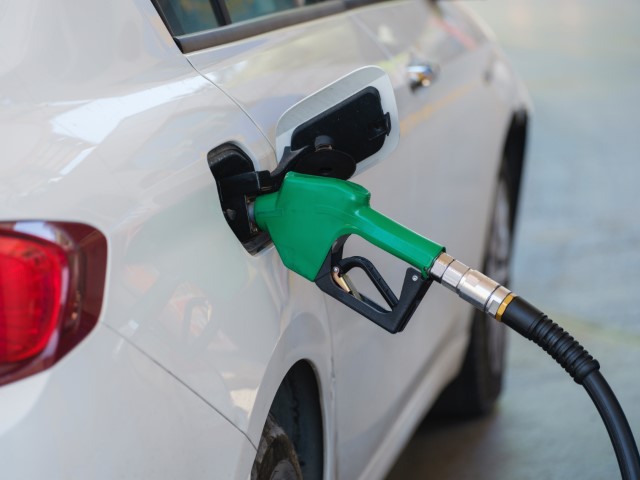 Have you had enough of fitting in with the crowd? Do you long for a unique touch to make your car stand out? Today’s blog article will explore the realm of sophisticated DPF solutions and show how they may bring out your own flair and turn a regular vehicle into a remarkable work of automotive art. Prepare to get more info here about how these innovative technologies transform the custom car experience and enable you to express yourself like never before.
Have you had enough of fitting in with the crowd? Do you long for a unique touch to make your car stand out? Today’s blog article will explore the realm of sophisticated DPF solutions and show how they may bring out your own flair and turn a regular vehicle into a remarkable work of automotive art. Prepare to get more info here about how these innovative technologies transform the custom car experience and enable you to express yourself like never before.
The concept of customization in the automotive industry
The surge in demand for customized vehicles reflects a desire among car owners to express their individual styles and preferences. Enabled by technological advancements, customization options, from aesthetic enhancements to performance upgrades, have expanded significantly in the automotive industry.
Within this trend, advanced diesel particulate filter (DPF) solutions emerge as a crucial element, elevating overall vehicle performance and addressing environmental concerns by reducing emissions and ensuring compliance with regulations.
Customization in the automotive realm is about tailoring every aspect of a vehicle to mirror the owner’s personality and lifestyle. Whether through aesthetic modifications like body kits or functional upgrades such as engine tuning, the possibilities are endless.
The appeal of customized vehicles lies in their ability to make a distinctive statement, allowing owners to stand out and showcase their unique style. This personalized touch fosters a sense of ownership and pride as individuals craft a one-of-a-kind vehicle that genuinely represents their identity.
Yet, as customization grows in popularity, so does the responsibility to consider environmental impact. Many aftermarket modifications can impact a car’s emissions levels, making the integration of advanced DPF solutions crucial for maintaining a harmonious balance between personalized automotive expression and eco-conscious choices.
What is a DPF, and how does it affect customization?
A Diesel Particulate Filter (DPF) is a crucial component in modern diesel engines, designed to reduce harmful emissions like particulate matter (PM) and nitrogen oxides (NOx). The filter captures soot particles during combustion, undergoing regeneration to burn them off and maintain a clean system. While DPFs play a vital role in emissions control, the rise in vehicle customization poses challenges.
Enthusiasts, particularly those exploring exhaust upgrades for enhanced performance, need to consider DPF integration. Performance exhaust systems often lack a DPF, risking emissions test failure or engine damage when installed on vehicles equipped with DPF systems. Modifications altering airflow or fuel delivery, like cold air intakes, can also impact DPF function, urging a careful balance between customization and emission-conscious choices.
Traditional vs advanced DPF solutions: What makes them different?
While traditional DPFs have traditionally met regulatory requirements, technological advancements and the demand for efficient vehicles have ushered in advanced DPF solutions.
Key Differences:
1. Design and Construction: Traditional DPFs feature a simple ceramic honeycomb structure with precious metal coatings as catalysts for soot particle oxidation. In contrast, advanced solutions boast intricate designs like silicon carbide or cordierite wall-flow filters, trapping finer particles at higher temperatures. Some advanced systems incorporate active regeneration technologies, promoting self-cleaning with injected fuel additives.
2. Maintenance: A significant distinction lies in maintenance requirements. Due to soot particle accumulation, traditional systems need regular cleaning or replacement upon reaching capacity. In contrast, advanced DPF solutions often have lower maintenance needs thanks to self-cleaning mechanisms and improved durability.
In navigating the choice between traditional and advanced DPF solutions, vehicle owners must weigh design intricacies, maintenance demands, and evolving emission standards for optimal performance and compliance.
The Benefits of advanced DPF solutions
Customization is a distinguishing feature for car aficionados who want to be unique when driving. Still, limited customization choices have resulted from strict emissions rules. And now for advanced DPF technologies, which provide a host of advantages beyond just meeting pollution regulations.
Key Benefits:
1. Enhanced Performance: Advanced DPF solutions redefine customization by positively impacting performance. Advanced systems optimize performance, unlike traditional Diesel Particulate Filters that can restrict airflow and compromise engine power. They facilitate efficient airflow, allowing customization for increased power and speed customisation without sacrificing engine performance.
2. Diverse Customization Options: Due to increased backpressure, traditional DPFs often limit modifications like engine tuning and upgrades. Advanced DPF solutions tailored for high-performance vehicles eliminate such constraints. This opens up possibilities, allowing enthusiasts to incorporate various modifications, including exhaust system upgrades and turbocharger enhancements, without compromising emissions compliance.
3. Increased Durability: Advanced DPF solutions offer increased durability beyond customization. Engineered specifically for high-performance vehicles, these systems are robust and resilient, ensuring longevity even in the face of demanding customizations.
Environmental impact
To sum up, integrating cutting-edge DPF technology into customized car projects not only promotes environmental responsibility but also moves us closer to a day when our love of fast cars will be harmoniously integrated with sustainability. We actively contribute to cleaner air, lower maintenance costs, and more resilient earth by selecting state-of-the-art DPF solutions.
Let our commitment to innovation drive us as we navigate the intersection of thrilling automotive experiences and a greener, healthier world.










